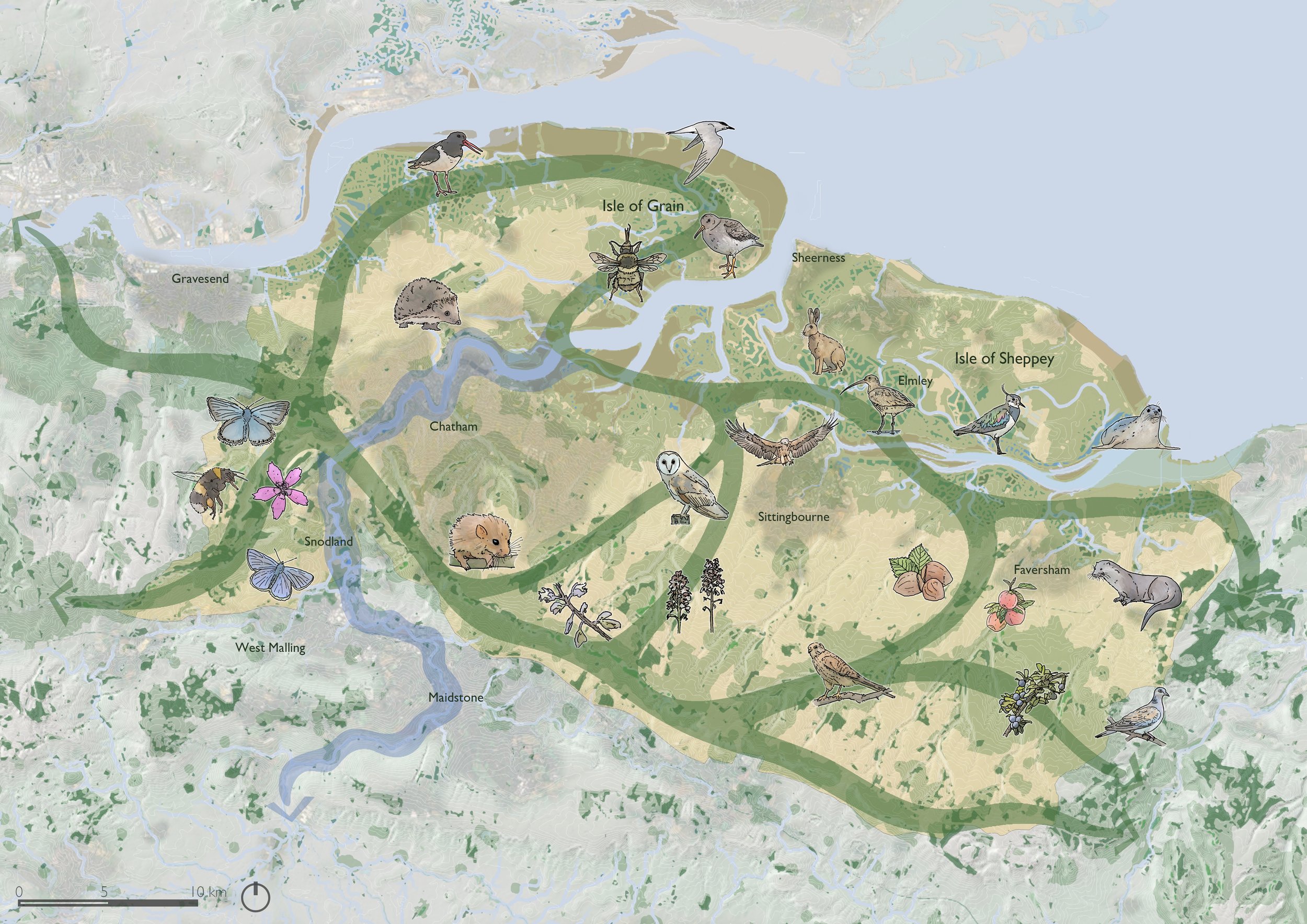
what is a nature corridor?
Nature corridors are designed to link habitats together, creating a continuous ecological corridor for wildlife to travel between. But the impact as far wider reaching than that…
The unique landscape of the Kent Downs is blessed with one of highest levels of biodiversity in the country, thanks to an abundant variety of habitats – including chalk grassland, woodlands, chalk cliffs, chalk streams, ponds and heathland, to name a few.
Many of the plants and wildlife species found here are scarce within Kent and the UK, and face the worst effects of climate change due to their proximity to mainland Europe, placing them in a precarious position.
“We often overlook the critical ways in which nature underpins our survival…”
Taking good care of nature has wider resonance than we may first think. While everybody understands that protecting the loss of wildlife and their habitats is important, we often overlook the critical ways in which nature underpins our survival. Not only do we rely upon nature to produce the food which nourishes us, but so too do we rely upon nature for our mental wellbeing and inspiration. Even the economy depends upon the natural world, with The World Economic Forum Global Risk Report demonstrating that five out of ten top risks to our economies in the next ten years are associated with nature. Quite simply: we depend upon nature, and nature needs our help.
Our communities need support, too. Despite being flanked by nature reserves and areas of outstanding natural beauty, the Medway towns suffer from high levels of social deprivation and lack of contact with nature, with a total of 37 neighbourhoods ranked in the 20% most deprived areas nationally. It’s an area which is somewhat of an island; a stones’ throw from some of the countries most affluent postcodes, set against real challenge.
The more isolated a habitat is, the more vulnerable it is. But join it up; make it bigger – it becomes more enriched, more resilient and better able to support life within it. The same is true for people; we all thrive when we’re connected. Chalk to Coast delivers this connection across Kent; a visionary regeneration project aimed at creating a landscape scale nature recovery corridor across Kent for wildlife to travel between. By linking the chalk landscapes of the Kent Downs with the coastal and marine environments of North Kent nature reserves, we will create a continuous network of habitats that support and sustain diverse wildlife populations – and a beacon of sustainable land use. As a result, we’ll see an increase in habitats, greater biodiversity and enjoy the far reaching benefits this has on eco-tourism, rural economies and the mental and physical wellbeing of our communities.
Our aim is to protect nature for the many, creating a series of continuous nature corridors which enable wildlife to move through the landscape more easily – and in doing so, tackle biodiversity loss, support rural economies and enhance local communities.
The only project of its kind in Kent, we’ve an incredibly exciting opportunity to protect and support the rare species and habitats found here, enabling us to make a significant contribution to improving the biodiversity of the entire country.
Chalk to Coast was conceived by Guy Nevill of Birling Estate, joined by Gareth Fulton and Tom Gore to create a unique partnership of land managers. As the leads of our respective farm clusters, we see the effect of wildlife loss in real time; the change in the soil condition, how the resulting reduction in crop yield leads to lower food production and how this creates an ever more challenging financial landscape for rural economies. We know the vital importance of producing food affordably, and have a unique perspective on the wider consequence of how land is managed. The Chalk to Coast project can support farmersto modify their practices in order to improve soil condition, encourage wildlife and benefit from the funding available to those who farm in tune with nature.
Working alongside Guy, Gareth and Tom is Marian Boswall, a leading landscape architect with a specialism in creating biodiverse habitats with a blend of rewilding and conservation. Marian brings another layer of expertise and perspective to the team, informing our thinking and leveraging a tapestry of contacts to build our network and further our impact.
Collaboration is a guiding principle of Chalk to Coast. Our strength is in the power of like minded people working together to create a bigger, better, more joined up solution to nature regeneration than any of us could manage alone. We want to share this spirit of shared responsibility, encouraging everyone – whether they’ve a farm or a window box – to join us on our mission to make space for nature.






